The King’s Garden (Kungsträdgården) is the oldest park in Stockholm. Originally a vegetable garden, today it is a lively meeting place, often the site of open air concerts and festivities.
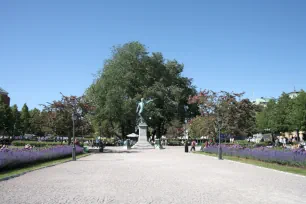
Kungsträdgården even attracts crowds during wintertime, when the center of the garden is turned into an ice rink.
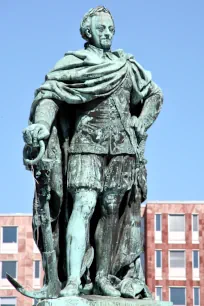
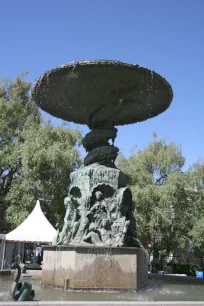
History
The history of the King’s Garden goes back to the fifteenth century, when this was the royal vegetable garden. In the late sixteenth century, it was converted into a private walled garden. In the 1770s, the park opened to the public.
When the Makalös Palace that bordered the Kungsträdgården to the south was ravaged by fire in 1825, the park was expanded to the waterfront. Little remains of the original park since the garden was demolished that same year and turned into a large square, which was often the scene of military exercises.
In the second half of the nineteenth century, the King’s Garden gradually regained its park-like character with the planting of rows of Linden trees and the creation of flower beds.
The King’s Garden Today
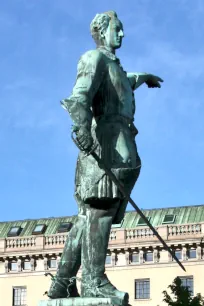
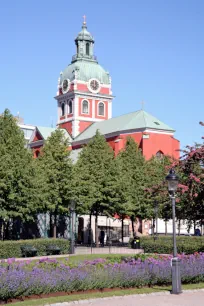
The garden is centered around a statue of King Charles XIII, created by Erik Gustaf Göthe and installed here in 1825. During wintertime, the area around the statue is turned into a popular ice skating rink. To the north is an open area with a large rectangular pond. The pond is often dry and used to stage concerts or to host various festivities.
At the south end of the King’s Garden is Karl XII’s Torg – Charles XII Square. At its center stands a statue of king Charles XII, the war king. He is seen pointing towards Russia, where he led his army in several battles against the troops of Peter the Great, one of his most important adversaries. The statue was created in 1868 by the Swedish sculptor Johan Peter Molin.
Between the two statues of the Charleses stands the famous fountain of Molin, created in 1866 in plaster for the first Swedish art and industry exhibition held that same year. The fountain, decorated with figures from Nordic mythology, was so popular that it was decided to cast it in bronze, and it was permanently installed here in 1873. The fountain is named after its creator Johan P. Molin, the same artist who was responsible for the nearby statue of King Charles XII.
Around Kungsträdgården
Several interesting historic buildings border the King’s Garden. The most picturesque of the two is the Sankt Jacobs Kyrka, a seventeenth-century church with a magnificent Baroque portal. Adjacent to the church stands the Kungliga Operan – the Royal Opera House, built at the end of the nineteenth century in neoclassical style. Just north of the Jacobs Kyrka is a summer house built in the seventeenth century for Queen Christina of Sweden. Christina would later abdicate, convert to Catholicism and move to Rome.

